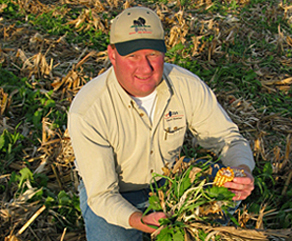With an innovative approach, extension agent walks his talk
Kieler, Wisconsin—There are lots of people within the grazing community who talk about the need to help young people get into the game. Larry Tranel happens to be one of those who matched that talk with his own money, and his own sweat.
Tranel, dairy field specialist for Iowa State University Extension, has employed a series of innovative ideas in converting 70 acres of good Southwest Wisconsin prairie ground into a productive starter grass dairy. Last year Eric and Amanda Gaul, both in their 20s, registered more than $90,000 in net farm income and $83,000 in returns to labor – along with an eye-popping 51% return on assets. (As renters, they had just $1,593/cow in assets, including an average of $1,100 in each cow.) Continue reading “A start-up dairy model for the future”






